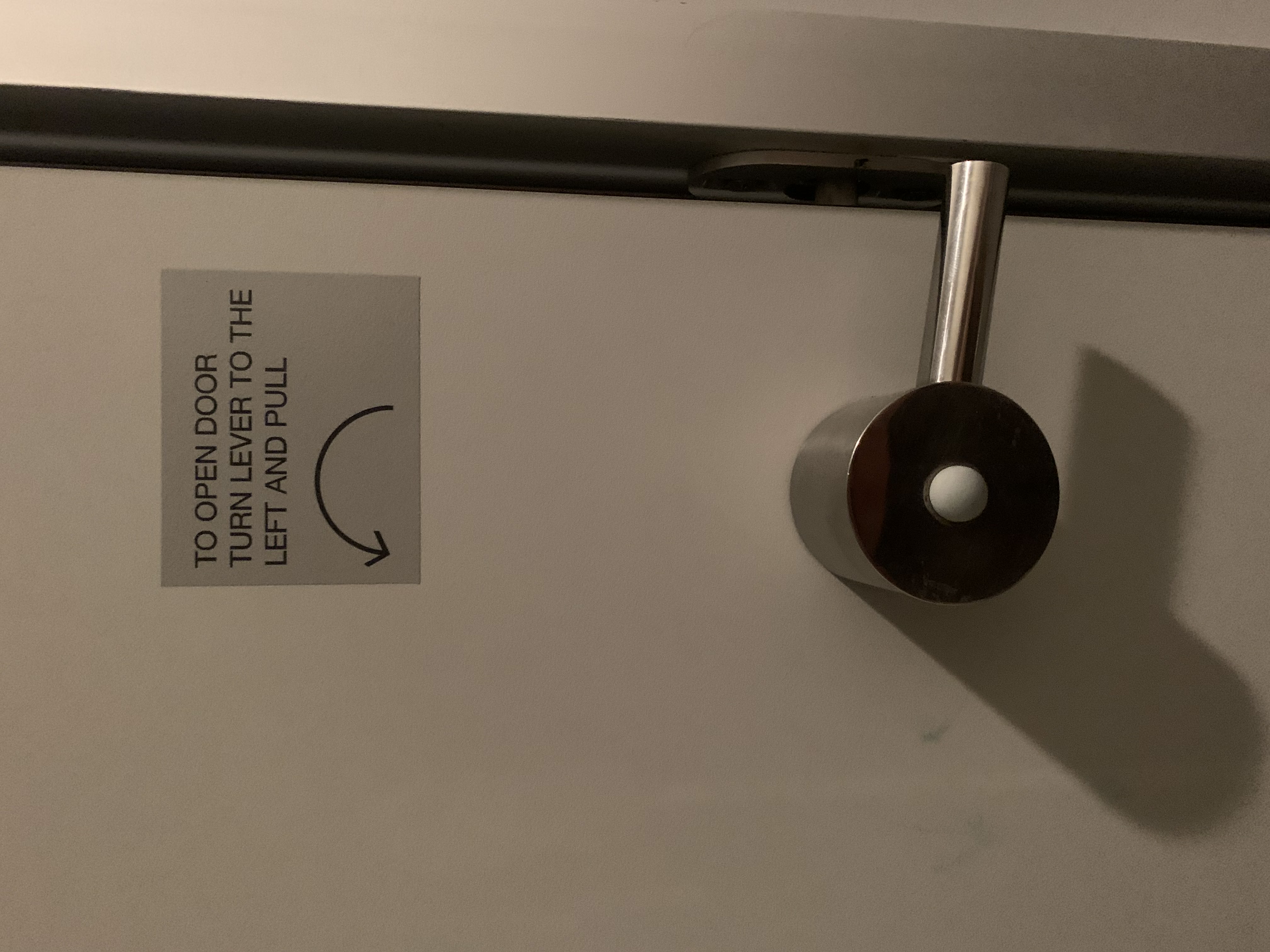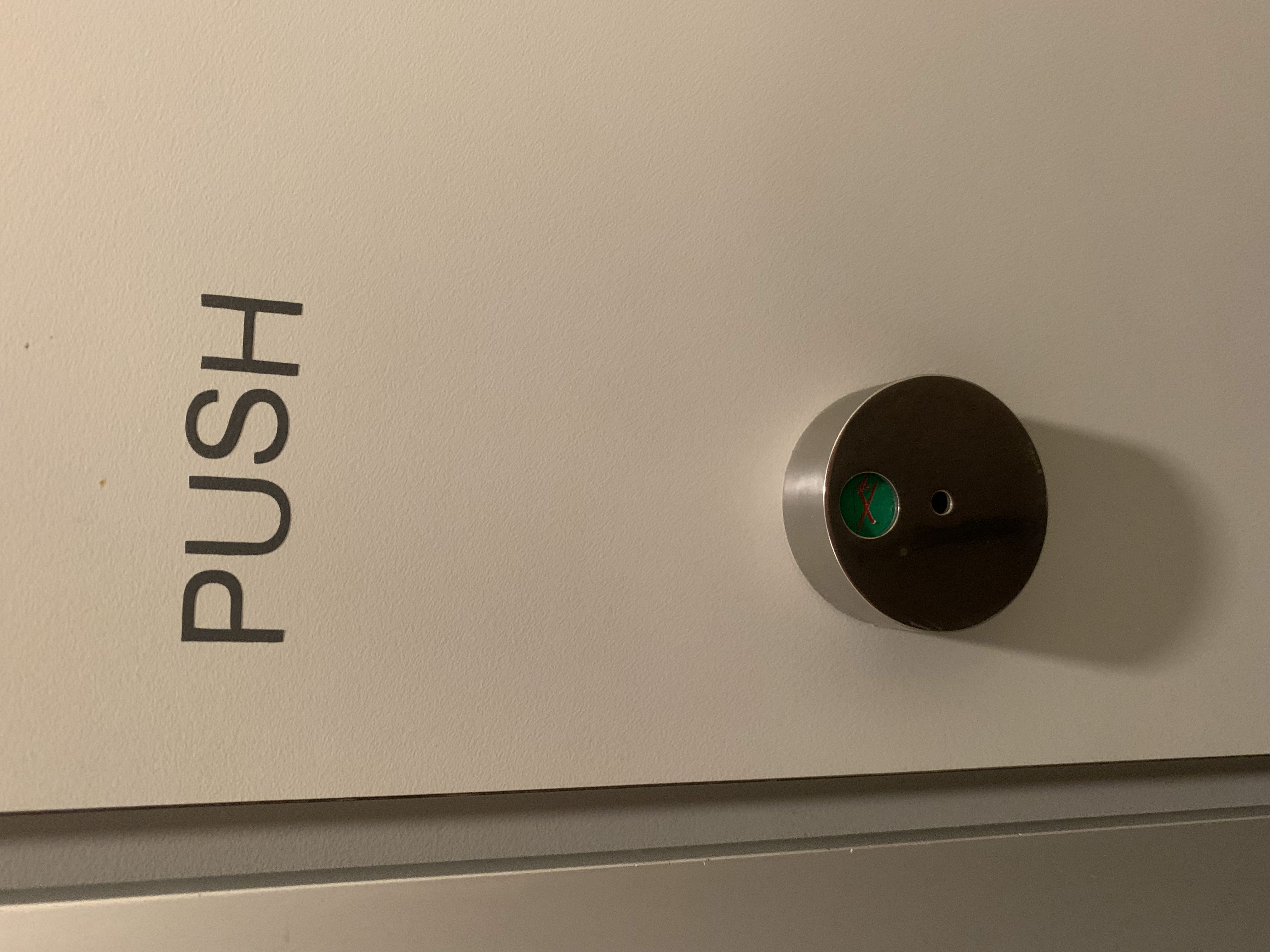- Learnability. The main problem caused by this door lock is in the instructions themselves. The initial opening of the door is pretty intuitive, as the lack of a handle suggests a push. However, the back of the door, instead of including instructions for locking, which would be the first interaction the user would have with it, includes instructions for opening. The first thing the user sees is an arrow pointed in one direction. As they try to move the handle in that direction to lock, it does not work. Upon reading the instructions, they realize that that is the direction to open, which they have still yet to do. If it had not been for the confusing instructions, the affordances of the lever would have led me to turn the knob in the correct direction. Even if this were not the case, instructions for locking would’ve been much more beneficial. Regardless, instructions for opening would not be needed, because intuition would indicate that to open, I would just have to retrace my past actions and turn it to the other side. Moreover, the afforances of the handle suggest the act of pulling that is needed to open the door.
- Safety. The lack in learnability of the door also somewhat impacts its safety. Due to the confusing instructions, errors are prone to occur. Regardless, the specifications do assure recovery once the user has read the instructions. However, it is true that, in case of emergencies, the process of opening a door might be of more import.
- Efficiency. The overall door does have good efficiency. The straightforward pushing for entry allows easy access to the stall, which is very useful, especially in case of emergencies. The knob, were it not for the confusion (which in turn slows down the process and impacts efficiency), is also quick to open and close, and does so smoothly, assuring an efficient exit as well.
Potential Solution. The main approach to resolve this problem would be to remove the confusing instructions on the inside of the door. If we want to guarantee complete learnability, we could add instructions for locking instead. This way, users would enter, see the arrow, and turn it that way instinctively to lock the door. Upon exiting they would remember the procedure for locking, and would do the inverse to unlock. Although we are relying on memorability of instructions to conduct this last procedure, I believe it outweighs the impact on learnability caused by the confusing arrow.

